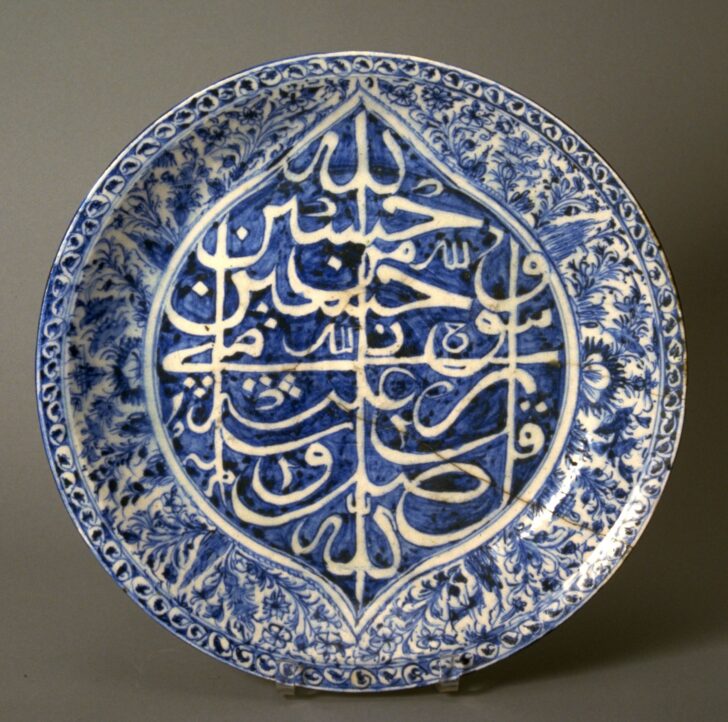Platter with an inscription from a Hadith [a saying of the Prophet Muhammad], signed by Ali ibn al-Hajj Muhammad
Ali ibn al-Hajj Muhammad

Description
March 28, 2009
This platter represents the perfect marriage of Persian and Chinese aesthetics. It was the Chinese who originated blue-and-white porcelain in the fourteenth century, using cobalt imported from western Asia for the blue pigment. Such wares were eagerly collected in Islamic cultures of the Middle East, where they were often imitated, as here, in fritware. The style and palette of this platter, as well as the potter’s signature on the back, indicate it was made in Kirman, a city in southern Iran. A Chinese-inspired floral scroll opens to create a central medallion space, where a large inscription in Thuluth script is reserved in white from the blue background. The inscribed text is a well-known Shi’ite hadith—one of the sayings of the Prophet Muhammad—that honors his descendants Hassan and Hussein. The illusion of filigree-work in the medallion recalls the pierced steel standards carried during the mourning ritual processions that commemorate the martyrdom of Hussein. Given this content, it is likely that the potter crafted this magnificent, unusually large platter to donate to a religious institution, perhaps a mausoleum, where it would have been displayed in a niche.
Subject Matter:
The central decoration contains a medallion in a pointed oval shape featuring a fragment of a hadith, or saying of the Prophet Muhammad. The rim is decorated with foliage, which grows from the edge of the medallion. There is a signature on the center of the foot which attributes Ali ibn al-Hajj Muhammad as the artist. Comparable objects attribute this to Kirman, Iran.
The hadith chosen comes from Isa al-Tirmidhi and states: Qala Rasulu I-Lahi salla Llahu 'alayhi wa sallama: Husaynun minni wa ana min Husaynin. Translation: the Prophet of God, may God bless him and grant him salvation, said: Husayn has issued from me and I from Husayn.
Physical Description:
A blue and white platter. White porcellanous body with painting in blue under a clear glaze slightly tinged with blue-green.
Usage Rights:
If you are interested in using an image for a publication, please visit https://umma.umich.edu/request-image/ for more information and to fill out the online Image Rights and Reproductions Request Form.